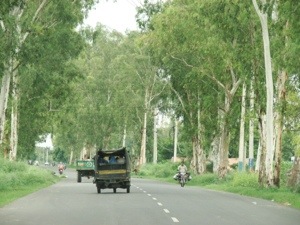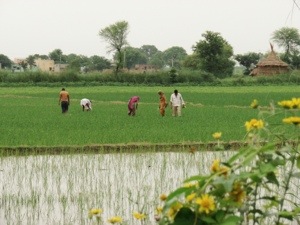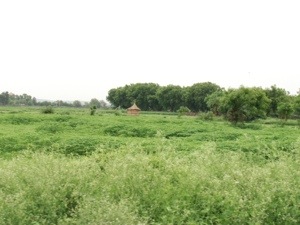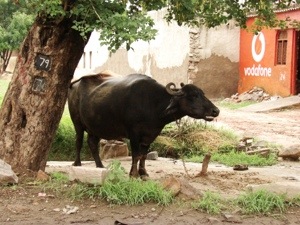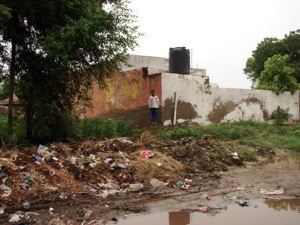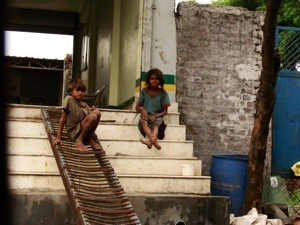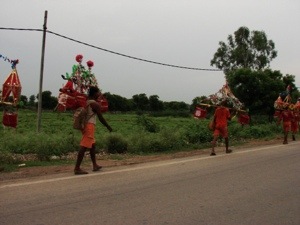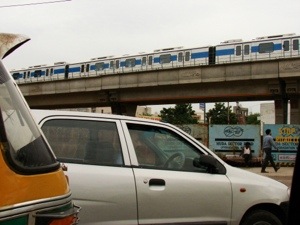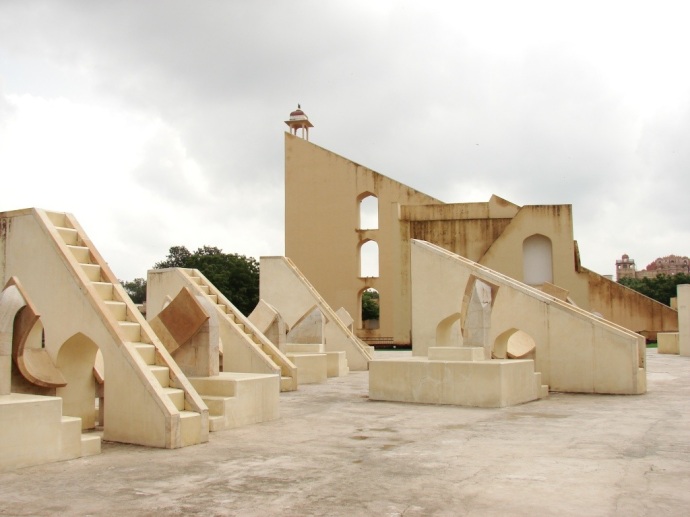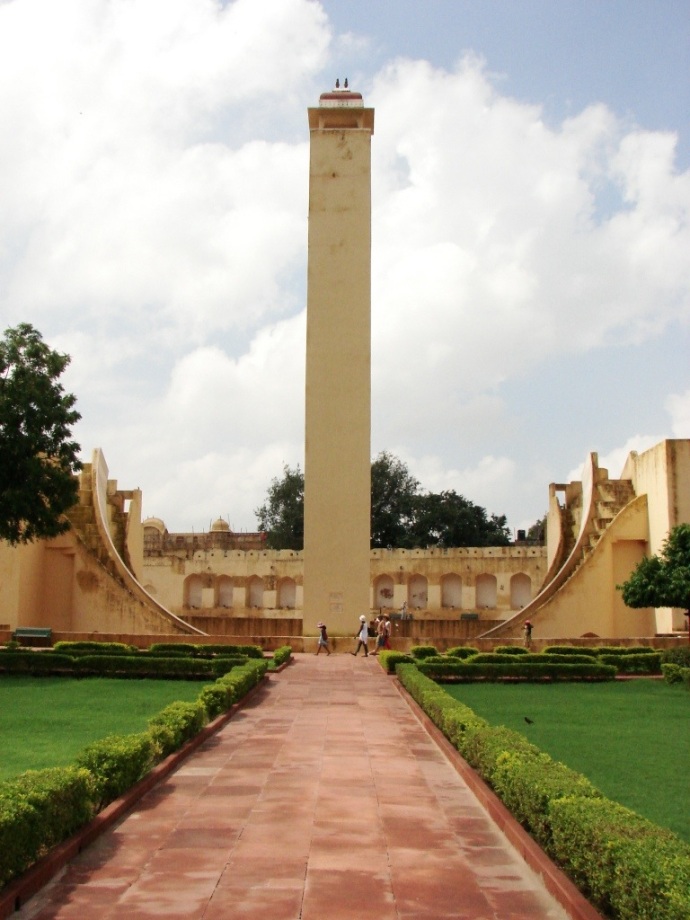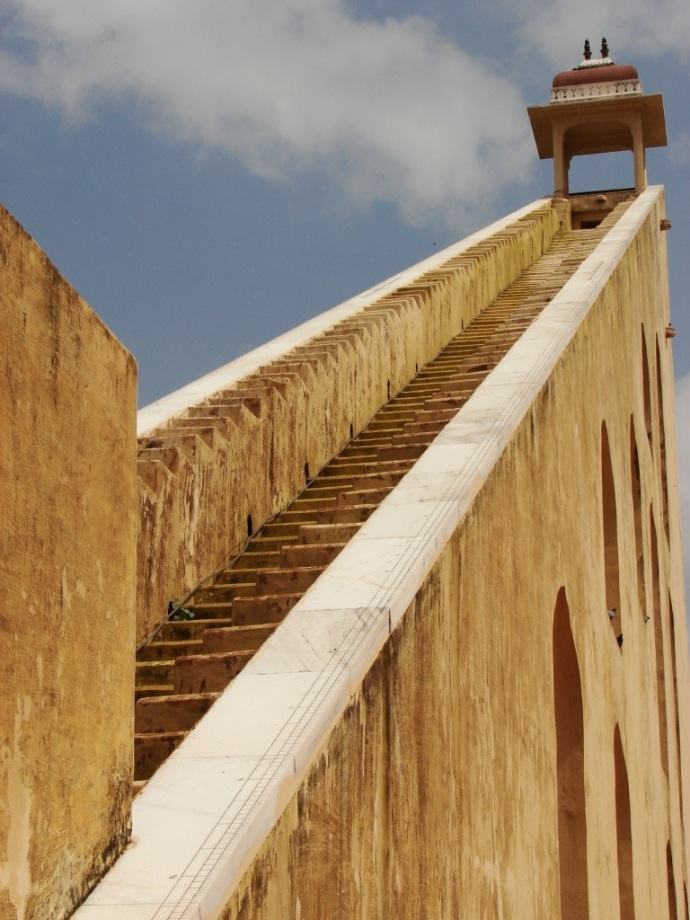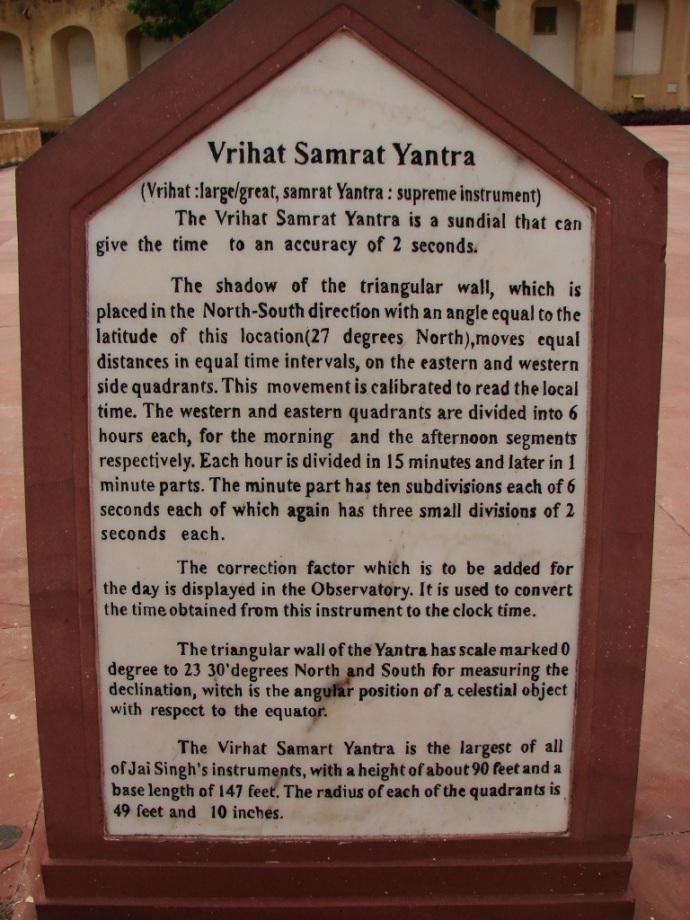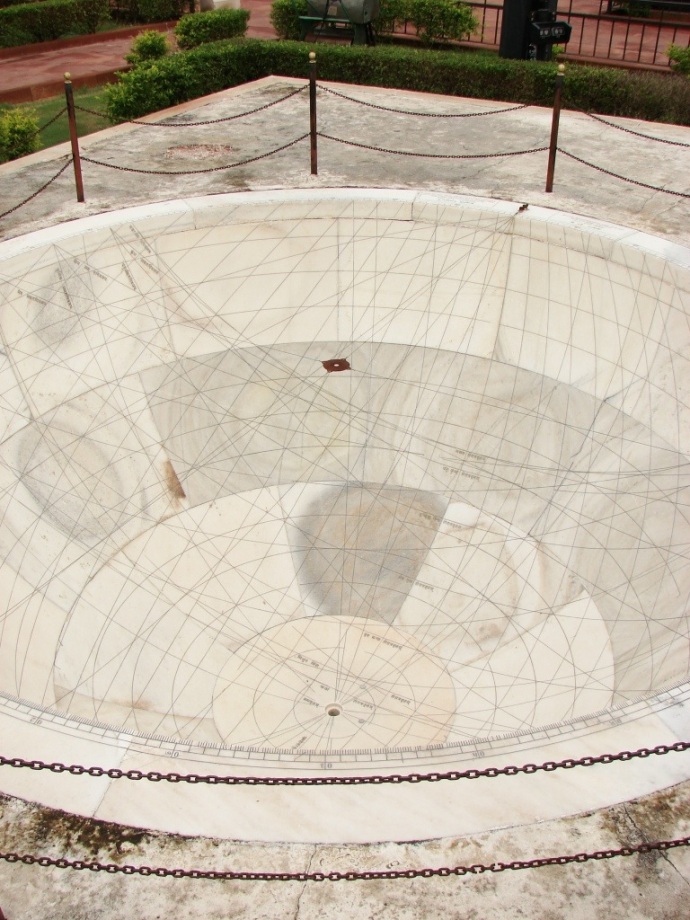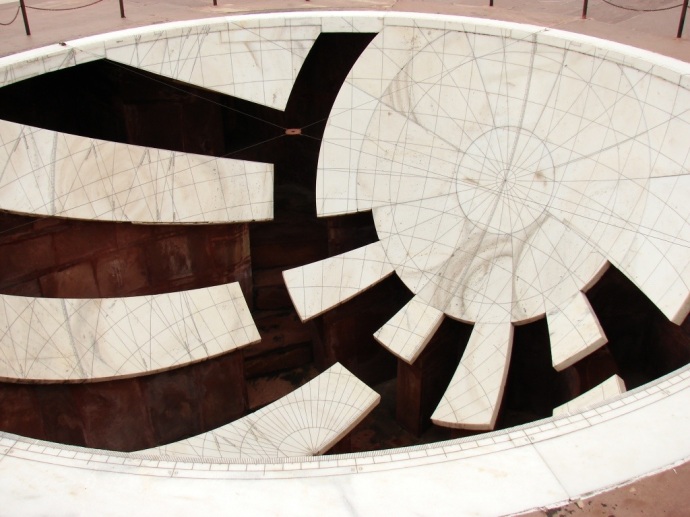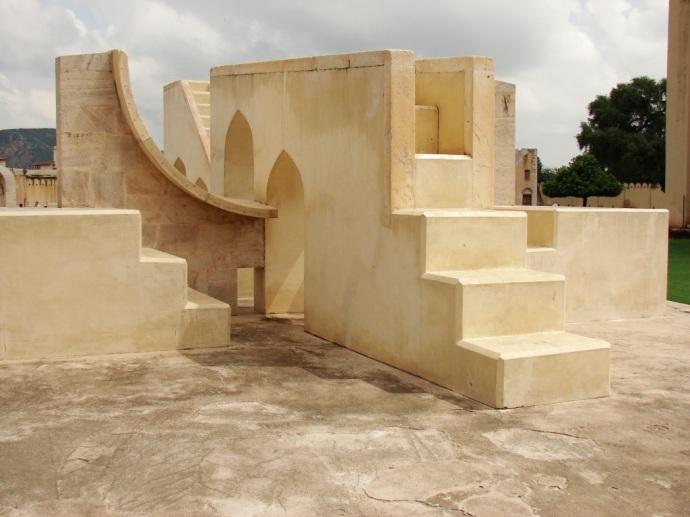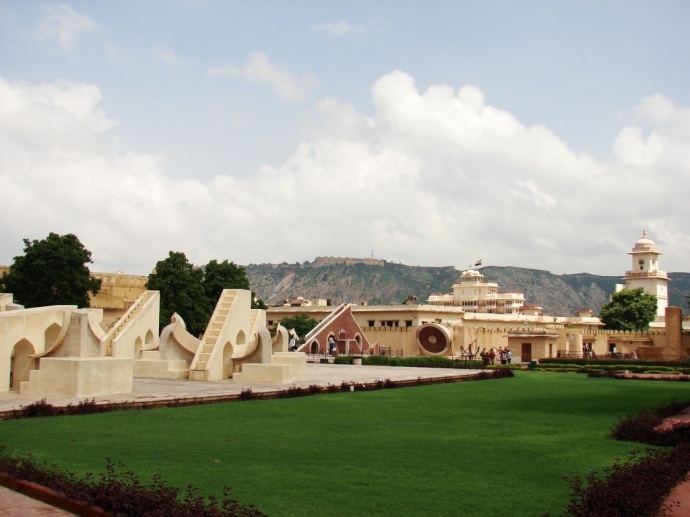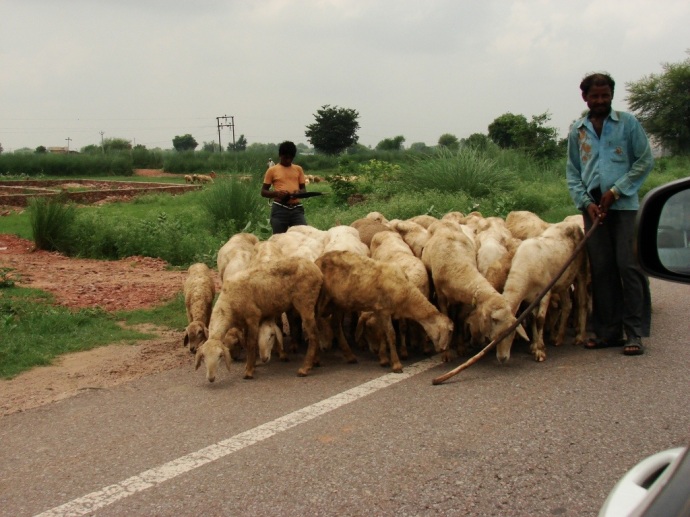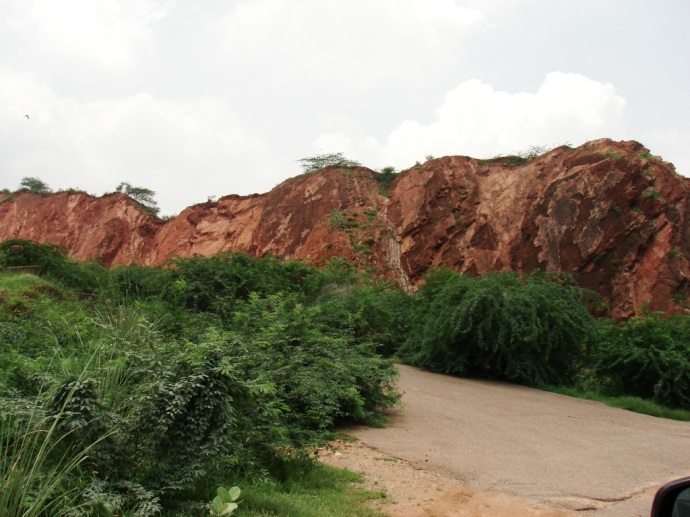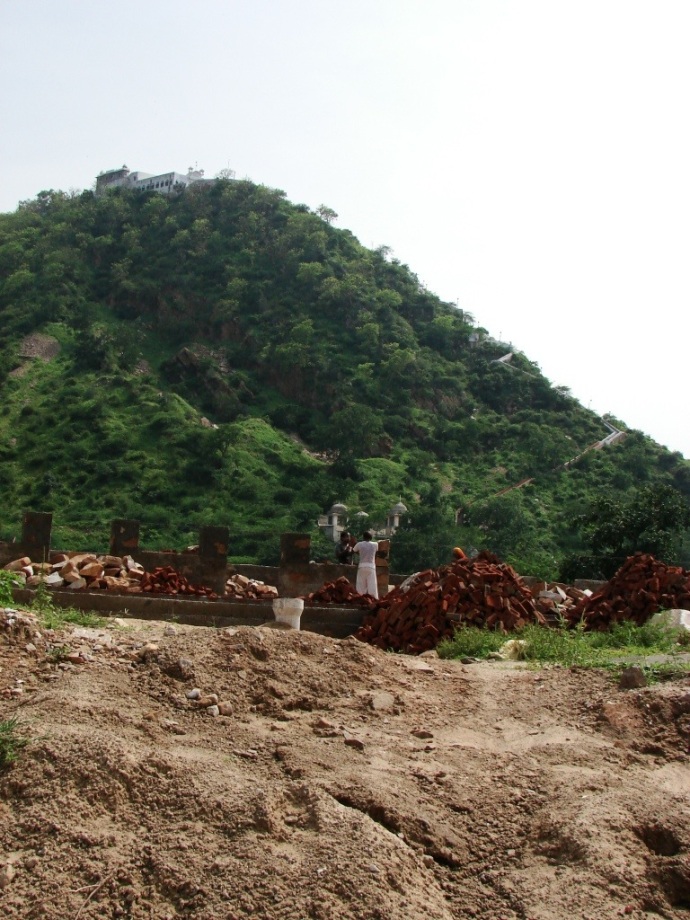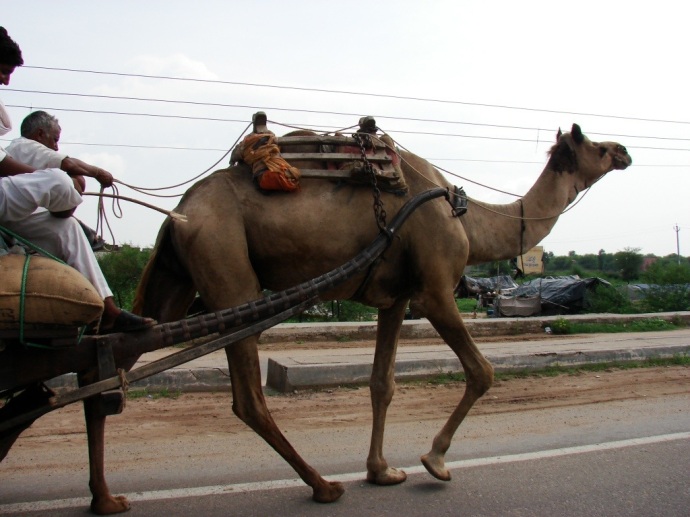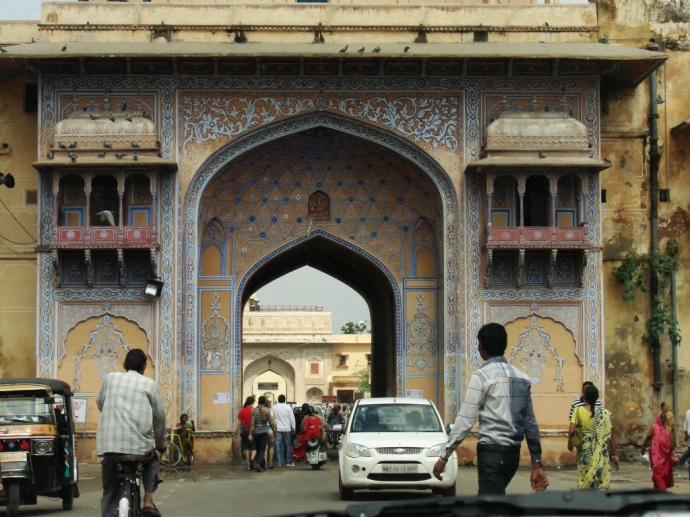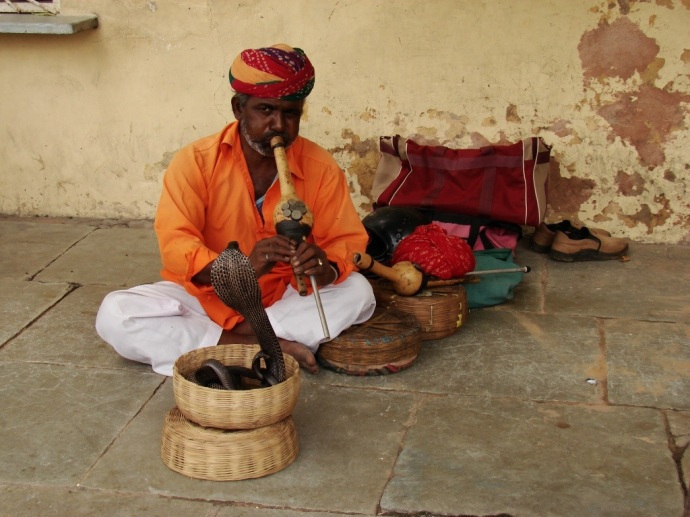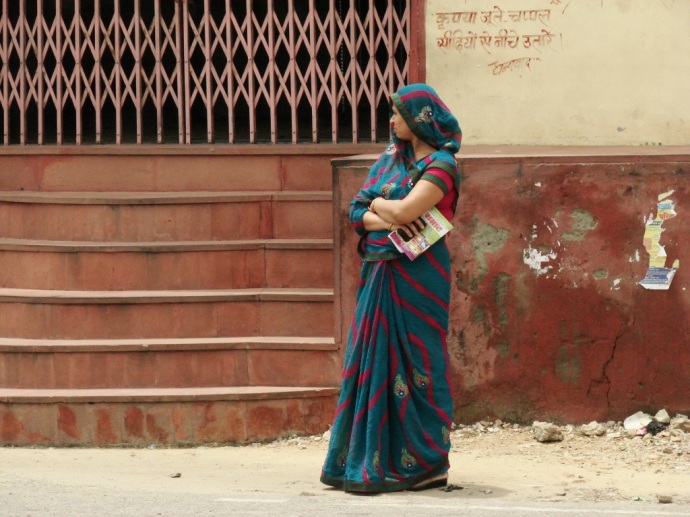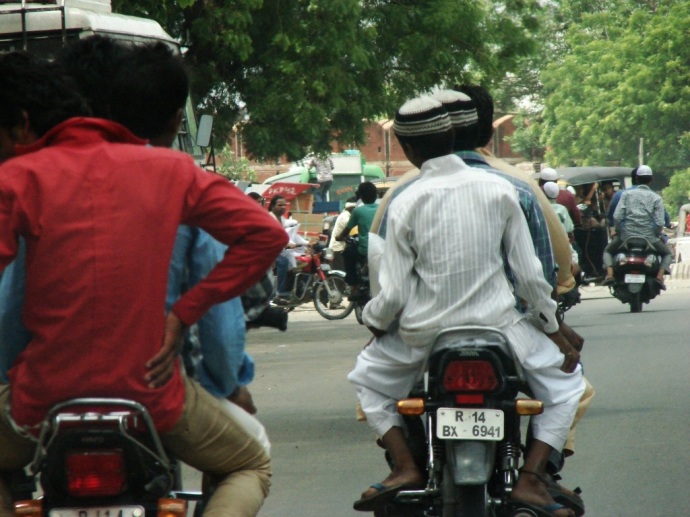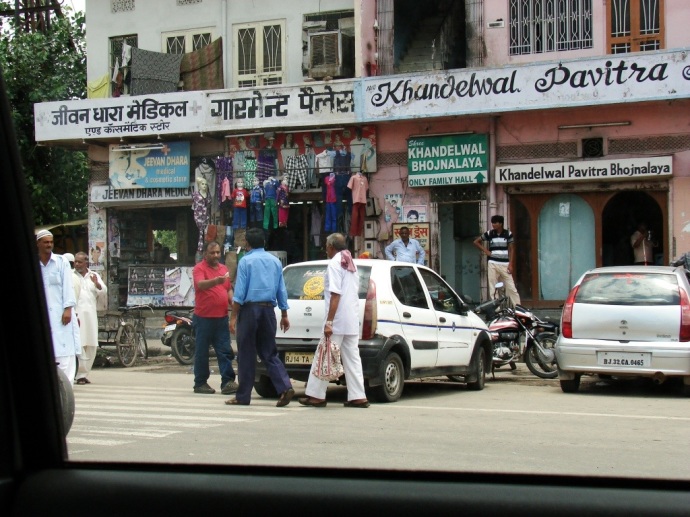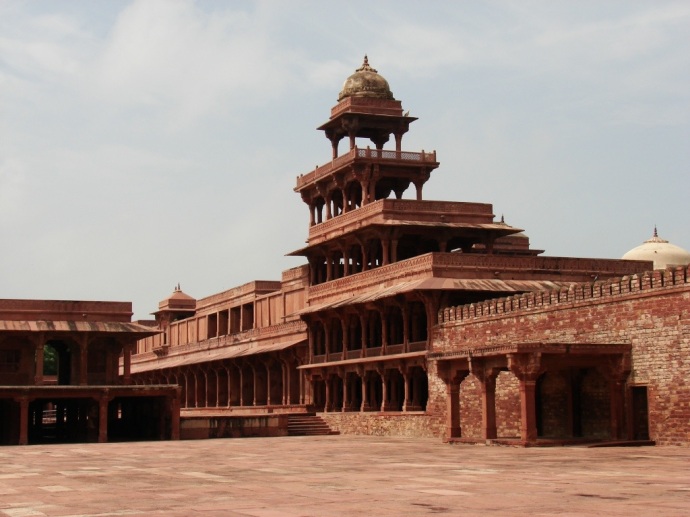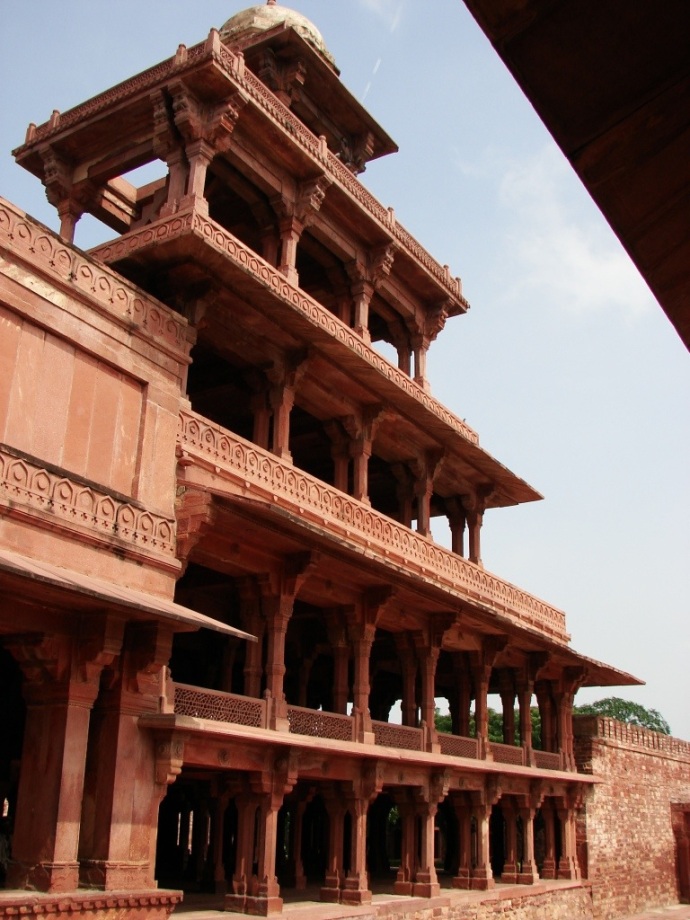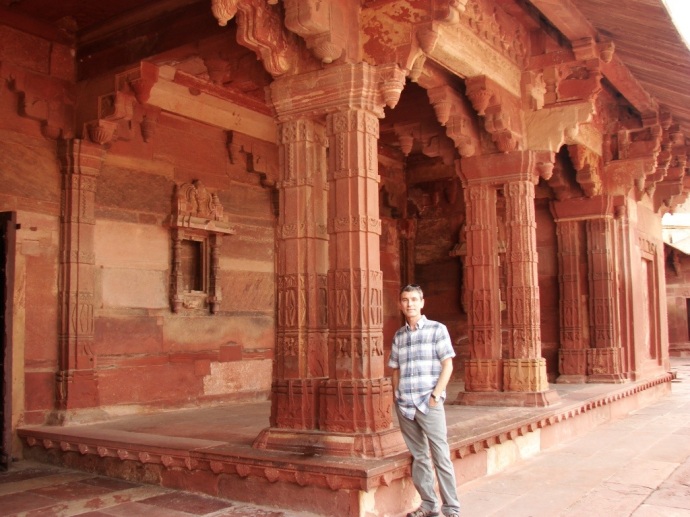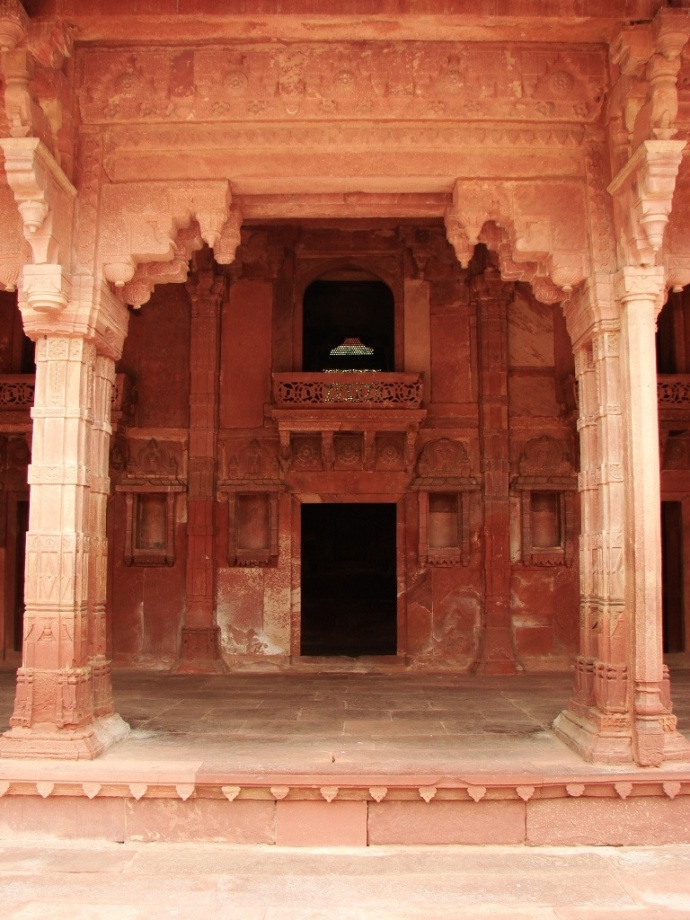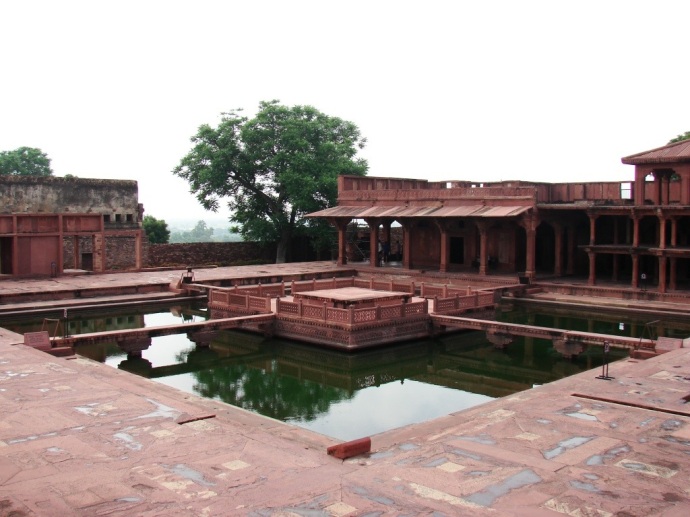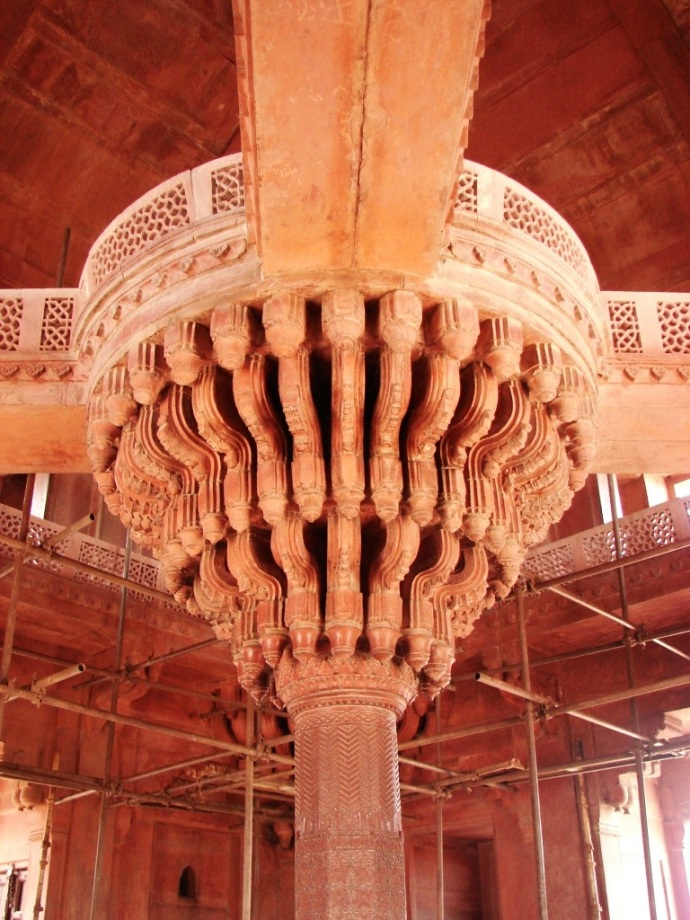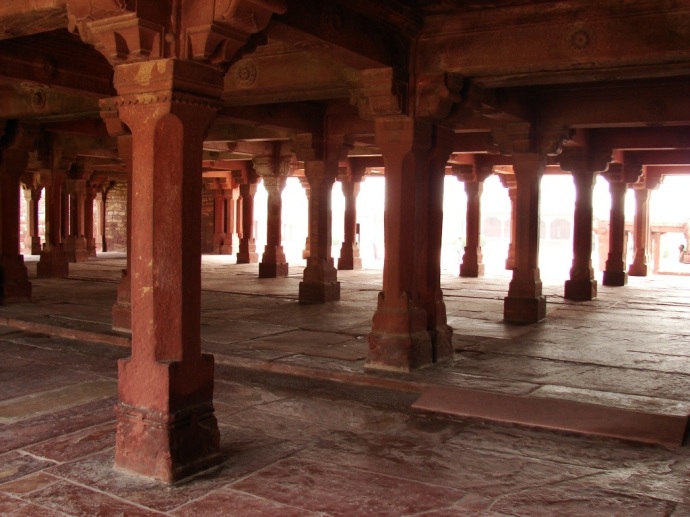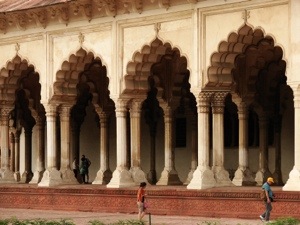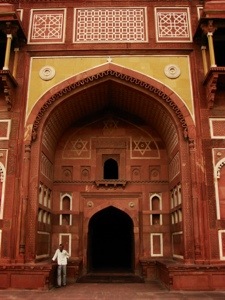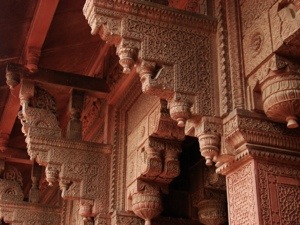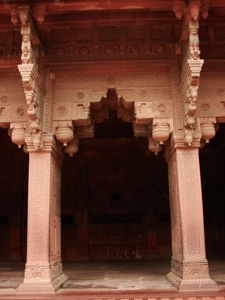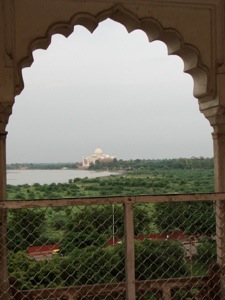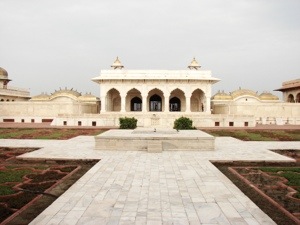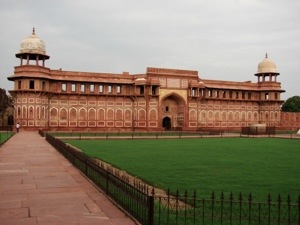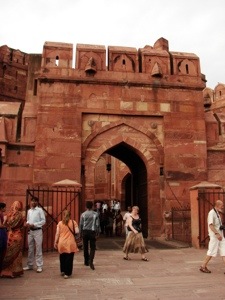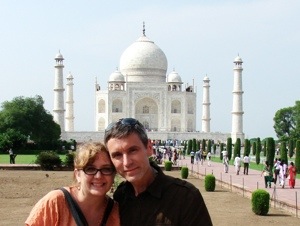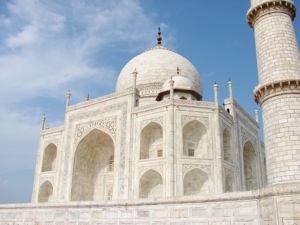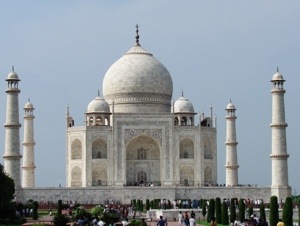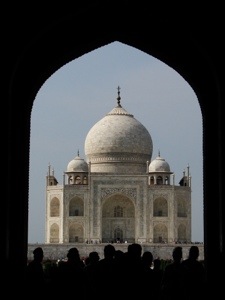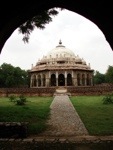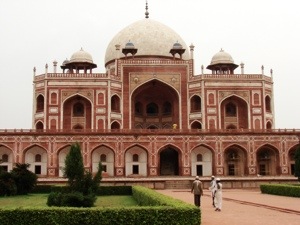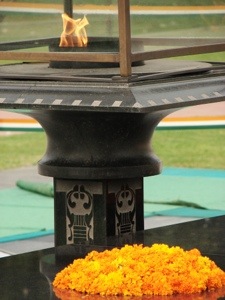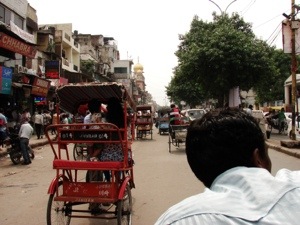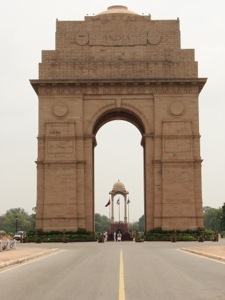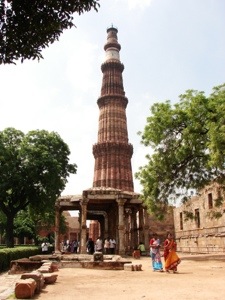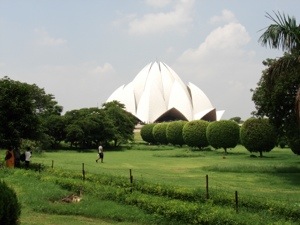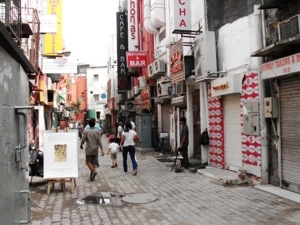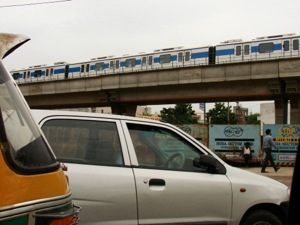Heading southward from Delhi to Agra, we first pushed though the bustling commotion of Gurgaon, the southern most reaches of the Delhi metro. Typical Indian street scenes include countless people making their way to work and attending to their daily affairs amid the innumerable roadside stands selling snacks and wares under tangles of power lines.
On the road we encountered many Hindu pilgrims dressed in orange and carrying shoulder baskets decorated with religious symbols. These pilgrims were making their way home on foot, walking hundreds of kilometers from Haridwar in the north where they collected water from the Ganga to bring home with them.
The city streets eventually give way to rural scenes. Roaming livestock along the roadsides and throughout the villages become frequent, and cars must be careful to avoid the cattle, goats, and water buffalo, else risk the wrath of the inhabitants. Agricultural fields, workers, and field quarter made of mud and manure dot the landscape. Colorfully dressed workers dot the green of the rice fields, a enormous cash crop for India.
Drivers race ahead in the clear, even stretches of road, but these segments of the journey are punctuated by the many steel gates cars must zig-zag through, designed as speed controls. The many toll gates and numerous potholes are equally effective yet, Indian drivers press on at breakneck speeds.
Tax collection points, of which there are many, provide ample opportunity for hawkers to sell their goods. Jewelry, bottled water, illustrated tourist books, and food items are common, especially when tourists are waiting in their car while their driver goes into the office to pay the tax. At one location, a teenage boy approached our car with a basket. Fortunately, the door was locked and the window rolled up because the boy opened his basket to reveal a cobra flaring his hood! He was seeking payment for photographs of his cobra. My wife recoiled at the sight of the cobra, and the boy soon left when he understood I was not interested in paying for a photo. No sooner did he leave than we were startled by a langur on a leash which suddenly hopped up on the edge of the car door and pressed his face against the glass, fogging the window with is breath. His owner was also looking for payment for photos.
Colorfully painted trucks dot the roadway. Truck horns offer a somewhat musical phrase while various cars announce their presence or intentions with an array of sharp tones, from beeps to blasts.
Traveling the highway to Agra is tiring; the surging speeds, fast lane changes, and frequent breaking wears on you, even as a passenger. It must be exhausting for a driver. After a few hours, we welcomed a washroom break (where a tip to the attendant for paper towels is expected), and lunch. The rest-stop owners know they have a captive tourist audience headed to Agra — the charge for a cold can of Coca Cola is 160 Rupees, or about $3.00!
Eventually the roadway reaches Agra, another busy city with clogged roadways, and home to a Mughal Empire stronghold, and one of the seven wonders of the modern world — the Taj Mahal.

